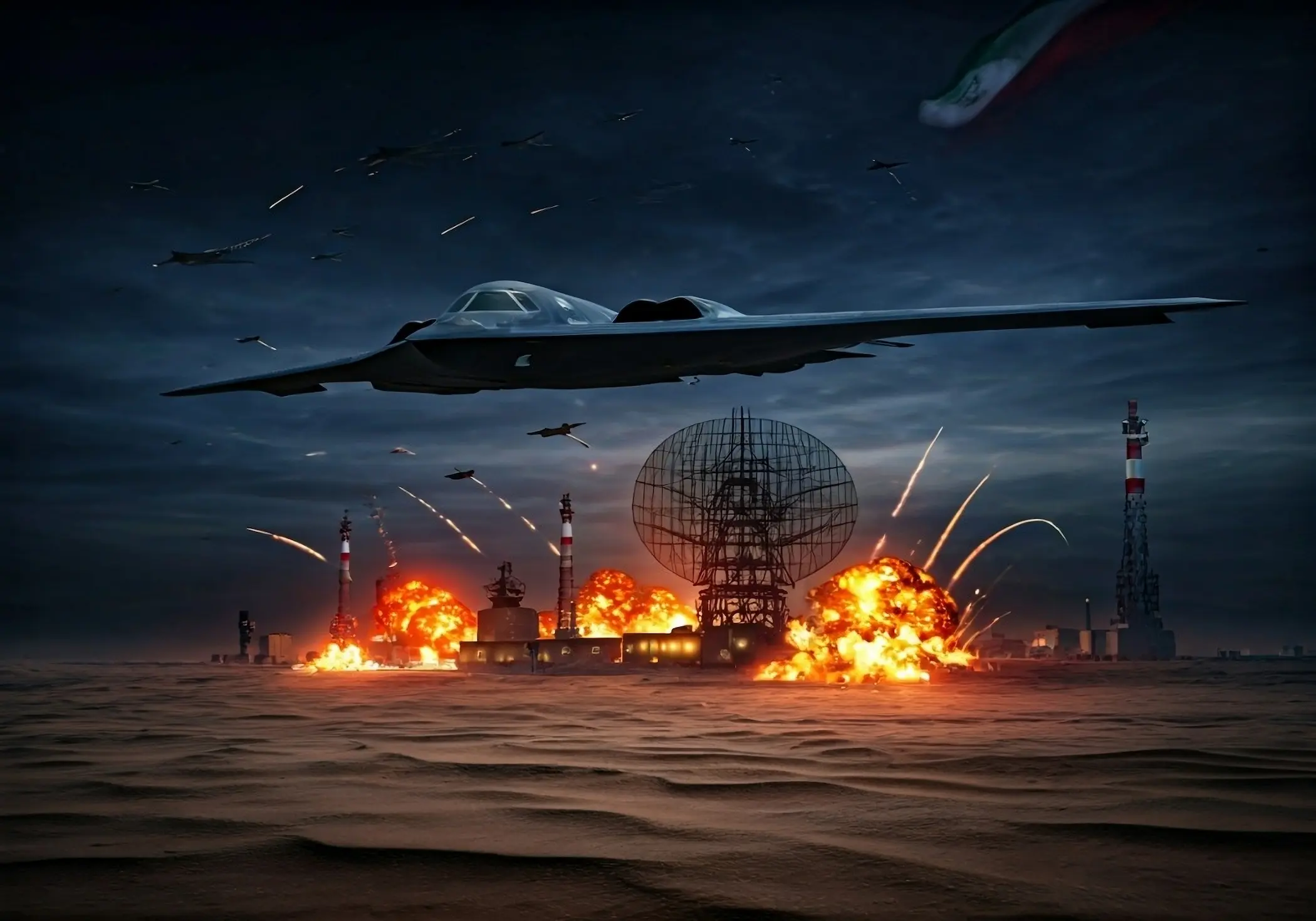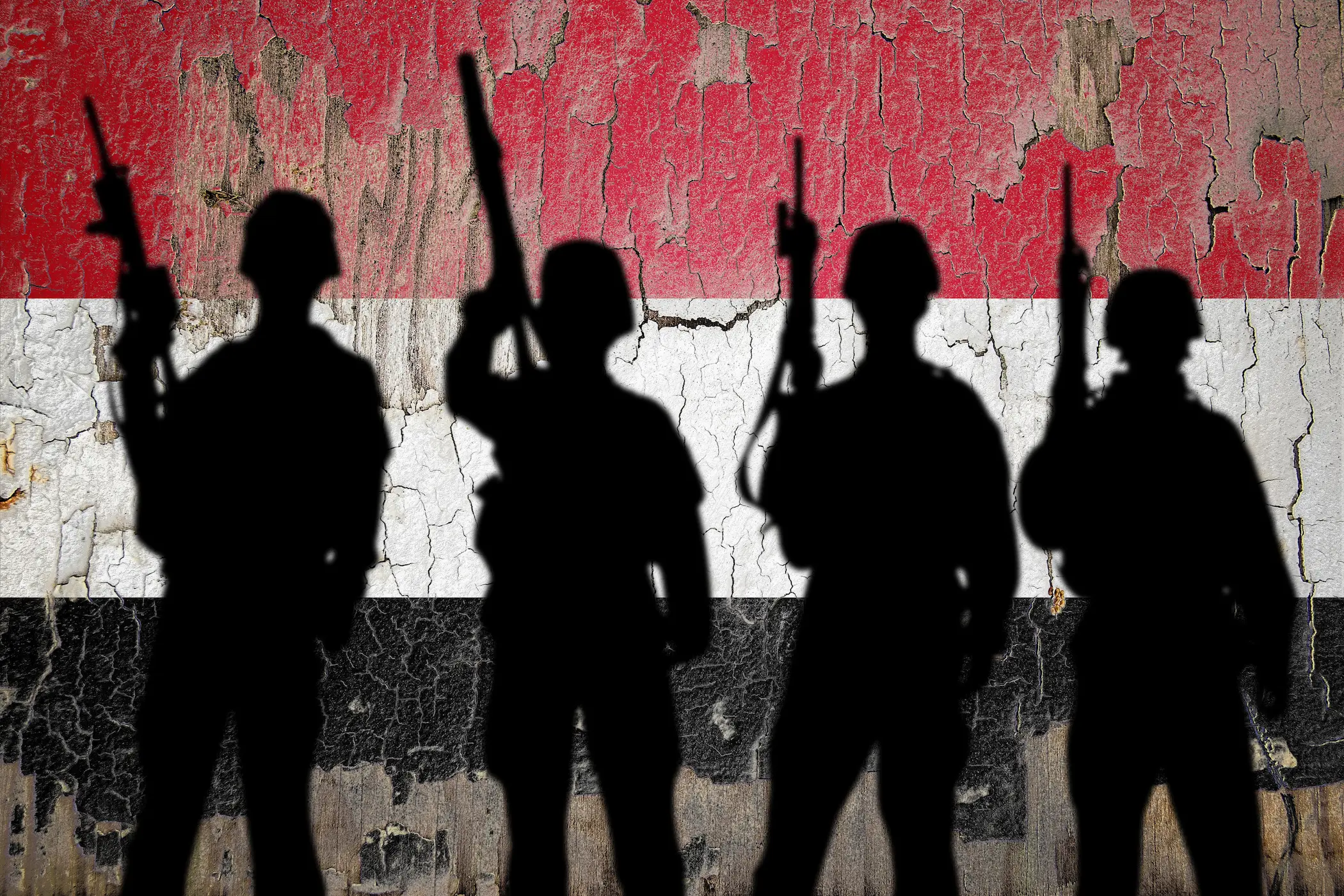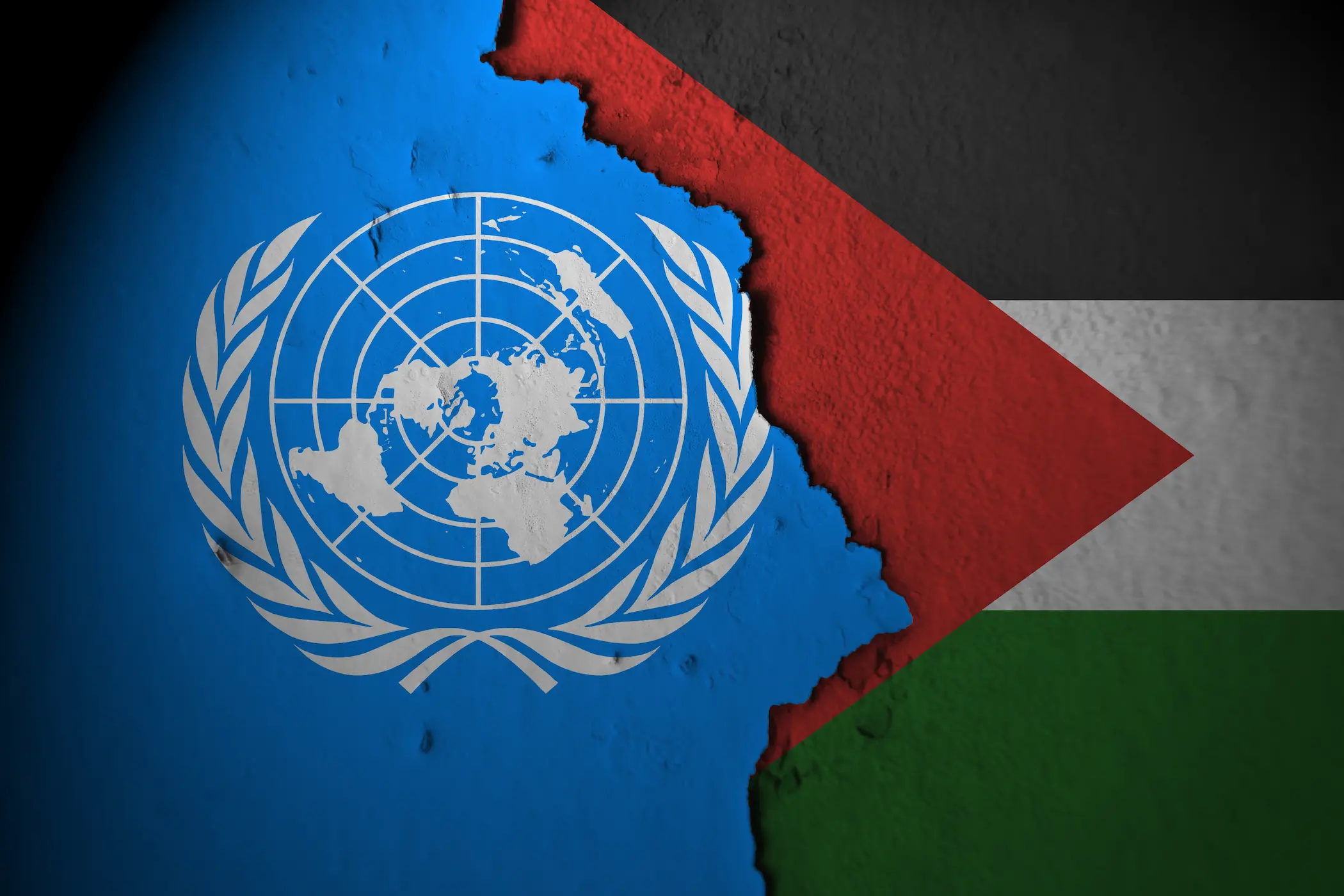On June 13, 2025, Israel launched an unprecedented and overt military operation against Iran, codenamed "Operation Rising Lion", marking a decisive shift in its strategic doctrine regarding Tehran’s nuclear trajectory. The operation, involving more than 200 combat aircraft—including F-15Is, F-16Is, and F-35s—targeted key nuclear infrastructure, foremost among them the Natanz enrichment facility, in addition to sensitive military and intelligence compounds in Tehran and suspected subterranean missile installations across multiple provinces.
The aerial strikes were not executed in isolation. They were accompanied by limited ground incursions carried out by Israeli special operations forces inside Iranian territory, alongside locally launched drones and sabotage missions activated by embedded networks, indicating a hybrid warfare architecture integrating airpower, cyber capability, and covert assets.
The operation resulted in the assassination of several senior Iranian military officials, including IRGC Commander Hossein Salami and Armed Forces Chief of Staff Mohammad Bagheri, as well as prominent nuclear scientists. Nevertheless, the intensely fortified Fordow enrichment facility, situated beneath a mountain near Qom, remained untouched, preserving Iran’s technical capacity to resume high-grade uranium enrichment if it chooses to do so.
Iran’s immediate response consisted of launching over 100 armed drones toward Israeli airspace, followed by announcements to construct a new, “impenetrable” enrichment site and to upgrade centrifuge infrastructure at Fordow. Globally, oil prices surged by over 10% within 24 hours, reflecting fears of regional destabilisation, particularly in light of Iran’s proximity to critical maritime chokepoints.
This paper thus aims to analyse the likely contours of Iran’s retaliatory strategy and to assess the broader geopolitical ramifications of the Israeli strike, particularly as they pertain to the security and strategic postures of the Arab Gulf in light of the retaliatory actions of Iran.
Iran’s Post-Strike Response to "Operation Rising Lion": Between Tactical Retaliation, Nuclear Reconfiguration, and Command Continuity
Following the extensive Israeli strike that targeted the very heart of Iran’s nuclear and military infrastructure, the Islamic Republic was confronted with a critical test of its capacity to absorb the shock and respond effectively without spiralling into a full-scale war that could well exceed its strategic and economic wherewithal. Consequently, Iranian behaviour in the aftermath of the operation was characterised by three interconnected levels of interaction: an immediate, tactical response; a strategic repositioning of its nuclear program in light of the direct targeting; and the management of the significant military leadership vacuum that resulted from the elimination of several first-tier commanders. This graduated approach reflects a multiplicity in Iran’s instruments of power and a discernible inclination toward playing for time rather than succumbing to impulsive decisions. These three levels can be analysed as follows:
Immediate Retaliation: Tactical Signalling and Strategic Restraint
Within 24 hours of the Israeli strikes, Iran launched over 100 armed drones toward Israeli airspace. Despite the numerical intensity, the operational impact was minimal; most UAVs were intercepted outside Israeli territory with no significant damage reported. This restrained and largely symbolic response suggests a deliberate Iranian preference for measured escalation, allowing it to fulfil domestic and regional expectations without crossing thresholds that might provoke a broader conflict.
The drone deployment functioned on multiple levels: it provided an immediate morale response to the assassination of high-ranking figures, it tested Israeli air defence systems under operational conditions, and it preserved Iran’s strategic ambiguity by avoiding direct missile engagements. This pattern echoes Iran’s January 2020 response to the killing of Qassem Soleimani, where it employed limited missile strikes against U.S. targets in Iraq to demonstrate capability without seeking total escalation.
Nuclear Posture: Reconstitution, Dispersion, and Strategic Depth
While Israel’s strikes did cause visible damage at Natanz, including fires at the above-ground Pilot Fuel Enrichment Plant (PFEP), they failed to penetrate the core of Iran’s nuclear architecture. The Fordow Fuel Enrichment Plant (FFEP)—located deep inside a mountain near Qom and capable of enriching uranium to near weapons-grade levels—remained untouched and fully operational, according to IAEA assessments.
In response, Iran quickly pivoted from a defensive stance to a proactive expansion of its nuclear capacity. The Atomic Energy Organization of Iran announced plans to establish a third enrichment facility in an undisclosed, hardened location, while concurrently initiating the replacement of legacy centrifuges at Fordow with advanced models. Such measures indicate an institutional resolve to deepen strategic redundancy, complicate targeting efforts, and insulate the program against future attacks.
Historically, Iran has demonstrated a consistent capacity to recover and even enhance its nuclear capabilities following sabotage. The Stuxnet cyberattack and the 2020–2021 sabotage incidents at Natanz did not derail enrichment progress; rather, they catalysed further development. This illustrates a systemic Iranian approach to crisis-driven advancement, wherein external attacks are reframed domestically as justification for accelerated technological sovereignty.
Military Command Structure: Disruption without Disintegration
The targeted killing of key figures such as IRGC Commander Hossein Salami, Chief of Staff Mohammad Bagheri, and Gholam-Ali Rashid, commander of Iran’s Khatam al-Anbiya Central Headquarters, represents one of the most severe leadership decapitations Iran has experienced since the end of the Iran–Iraq War. Yet, the structure of Iran’s military and security apparatus—especially the IRGC—is designed around command continuity and decentralised operational authority, precisely to endure such contingencies.
Iran’s armed forces have conducted internal simulations of decapitation scenarios since at least 2012, anticipating potential Israeli or U.S. strikes. In this framework, despite the immediate void carved out by the operation at the apex of the hierarchy, projections indicate the military apparatus possesses the wherewithal to reconstitute itself in short order, especially given the presence of collective leadership councils where authorities are dispersed and managed from multiple command centres. Nonetheless, the political and psychological ramifications stemming from the neutralisation of these personalities cannot be brushed aside; it might either propel the institution toward a more disciplined response on the one hand, or, conversely, toward bringing into play unconventional instruments, such as extending the reach of their response via regional proxies in Iraq, or Yemen, or even targeting the Arabian Gulf. It can thus be posited that Iran fully retains its capacity for restructuring. Yet, it confronts a novel equation that compels it to forge a dynamic, multi-front, and anti-exposure deterrence equilibrium within a regional environment that no longer countenances the nuclear program persisting in its present form unchallenged.
Potential Iranian Retaliation Scenarios: The Gulf States, Risk Engineering, and Asymmetric Deterrence After “Operation Rising Lion”
Although Iran’s initial response to the Israeli strike came in the form of launching over 100 drones toward Israeli airspace, the symbolic nature and limited operational impact of the attack suggest that the real retaliation is yet to begin. Tehran still retains a broad arsenal of tools that could be deployed against the interests of its adversaries in the Gulf, at varying escalation levels. Drawing on Iran’s historical behaviour under conditions of extreme pressure and its available instruments of power, three primary pathways of retaliation can be identified: direct military strikes (missile and aerial), indirect engagement via regional proxies, and economic-sabotage operations targeting infrastructure and maritime routes. These scenarios are not mutually exclusive; rather, they may be integrated depending on the strategic demands of timing and geography.
Direct Military Engagement: Missiles and Drones as Strategic Leverage
The Israeli strike revealed that Iran remains committed, at least for now, to minimal engagement thresholds in order to avoid full-scale conventional war. However, Tehran may still opt for calibrated missile or aerial attacks against “soft targets” in the Gulf, especially those states with overt security ties to Israel, most notably the UAE and Bahrain. Such targets may include oil facilities, civilian airports, power stations, or critical export terminals.
Iran possesses a large arsenal of medium-range ballistic missiles, such as the Shahab-3 and Sejjil, with increasing accuracy and range capable of reaching deep into the Gulf. Tehran has previously demonstrated its willingness and technical capability, notably in the 2020 attack on the U.S. Ain al-Asad airbase in Iraq. The 2022 Houthi attacks on the UAE, involving ballistic missiles and drones, further underscore the vulnerability of Gulf infrastructure to long-range strikes.
The likelihood of Iran opting for direct strikes will depend on two primary conditions: first, Tehran’s ability to frame such strikes as a “legitimate” response to direct collaboration between Gulf states and Israel or the United States; second, the degree to which the U.S. is prepared to intervene in defense of Gulf allies. Should Iran choose this route, it will likely deploy a gradual approach, leveraging escalation for deterrent purposes without breaching the threshold for full American retaliation.
Indirect Retaliation: Proxy Networks as Flexible, Low-Cost Instruments
Iran’s preferred method of asymmetric warfare lies in its use of regional proxies to respond without incurring the political and military cost of direct confrontation. Tehran commands a diverse network of non-state actors, including the Houthis in Yemen, Shia militias in Iraq, and Hezbollah in Lebanon, in addition to dormant cells in some Gulf countries previously used for localised sabotage.
Historical precedent confirms the political and psychological effectiveness of this strategy. Houthi forces have repeatedly targeted strategic infrastructure in Saudi Arabia and the UAE, as seen in the 2019 and 2022 attacks, while allowing Tehran plausible deniability. These groups now possess independent capabilities to manufacture drones and conduct complex maritime or land-based operations, as exemplified by attacks on Yanbu Port and vessels near Fujairah.
In Iraq, pro-Iranian militias could strike U.S. or Gulf interests within Iraqi territory, complicating Washington’s deterrence calculus. Tehran may employ geographic sequencing, beginning with Western targets in Iraq or Syria before incrementally escalating toward the Gulf, thereby preserving operational flexibility while increasing pressure.
Economic Warfare and Maritime Sabotage: Targeting Infrastructure and Strategic Routes
Perhaps the most globally consequential scenario involves Iran executing direct or indirect economic sabotage against vital Gulf infrastructure, particularly at chokepoints such as the Strait of Hormuz and Fujairah Port, or critical energy and utility facilities along the UAE and Saudi coastlines. Tehran has repeatedly threatened such action, framing it as a legitimate response to external threats to its sovereignty.
The Strait of Hormuz represents a strategic vulnerability of extraordinary importance, with over one-fifth of global oil trade transiting through it. Using unconventional tools—naval mines, drone boats, or cyberattacks on maritime navigation systems—Iran could severely disrupt global trade without openly declaring responsibility, making retaliatory responses more politically complex.
The precedent of the 2019 attacks on Saudi oil installations at Abqaiq and Khurais, which temporarily shut down 5.7 million barrels per day of production, highlights the scale of potential disruption. Given today’s fragile global energy market, exacerbated by the Russia–Ukraine war and European energy insecurity, similar attacks could have far greater geopolitical and economic consequences.
In conclusion, Iran’s retaliatory options in the wake of “Operation Rising Lion” are not only diverse but also highly adaptive. Tehran is unlikely to rely on a single path; rather, it may employ a layered and sequential strategy that blends all three approaches depending on Israeli escalation, international reactions, the posture of the United States, and the specific vulnerabilities of Gulf states at any given moment.
The Geopolitical Reverberations of “Operation Rising Lion”: Gulf Exposure and the Strategic Repositioning of the UAE
When Israel launched its wide-scale aerial strikes against Iran on June 13, 2025, it triggered a structural shockwave that forced the Gulf states, particularly the United Arab Emirates, into the heart of a shifting regional security equation. These states could no longer assume the posture of distant observers to regional militarisation. Instead, they found themselves directly implicated in the emerging military and economic confrontation with Tehran. The strike compelled Gulf capitals to reassess the viability of their deterrence postures, the credibility and cost of their strategic alliances, and the degree to which they are prepared to absorb the consequences of being embedded in a security architecture that now openly targets Iran. The UAE’s response—both stated and inferred—reveals three interlocking dimensions of this recalibration: energy market vulnerability, diplomatic tension, and evolving defence doctrine.
Energy Political Risk: Market Shock and the Limits of Structural Immunity
The Israeli strike immediately drove global oil prices upward by more than 10% within less than 24 hours, reflecting market fears of retaliatory disruption in vital maritime corridors, chief among them the Strait of Hormuz, which facilitates roughly 20% of global oil shipments daily. This rapid escalation forced Gulf states, especially the UAE, to confront the reality that their critical export infrastructure and maritime corridors are increasingly vulnerable to Iranian retaliation, whether directly or through proxy actors.
Despite years of Emirati investment in port diversification and logistics resilience, geography still dictates a high degree of exposure, particularly in oil export nodes such as Ruwais and Fujairah. The shock revealed a persistent fragility in the Gulf’s economic architecture when confronted with regionally proximate geopolitical threats. In response, policymakers in Abu Dhabi appear increasingly committed to accelerating the transition toward a more diversified, post-hydrocarbon growth model, one better insulated from global market volatility.
Iran, for its part, recognises that any credible threat to the Strait of Hormuz or Gulf energy infrastructure inflicts not just regional damage, but systemic pressure on the global economic system. Such escalation invites diplomatic intervention from major powers—pressure that Iran cannot afford to sustain indefinitely. The Gulf, therefore, finds itself caught between urgent security imperatives and global trade dependencies over which it has limited control and diminishing strategic autonomy.
Diplomatic Posture: Pragmatic Tension and the Recalibration of Normalisation
Gulf states—including the UAE—issued explicit condemnations of the Israeli strikes, invoking principles of sovereignty and non-escalation. This reaction, unimaginable before the Abraham Accords, signals a significant shift in Gulf perceptions of the risks associated with unqualified alignment with Israel and the United States. Despite robust cooperation in intelligence, defence, and technology, Abu Dhabi now understands that open-ended Israeli or U.S. military escalation could render it a direct target for Iranian retaliation—military, cyber, or otherwise.
Since 2015, the UAE has pursued a foreign policy centred on pragmatism, flexibility, and regional hedging. However, the recent confrontation has sharply reduced the tactical space available for Gulf manoeuvring. The Emirates now face a strategic dilemma: how to preserve their relationship with Israel while avoiding entanglement in its military confrontation with Iran. That balancing act becomes increasingly tenuous as the conflict intensifies.
In this context, it is plausible that the UAE may revisit the scope and visibility of certain forms of military and intelligence cooperation with both the U.S. and Israel. Sensitive agreements—particularly those involving joint security protocols—may be frozen, delayed, or reframed. At the same time, Abu Dhabi may deepen its strategic ties with other global actors, including China, Russia, the European Union, and Brazil, seeking a more diversified set of partnerships to mitigate geopolitical risk. “Operation Rising Lion” has thus compelled the UAE to rethink the very terms of its alignment with the West, not from ideological disillusionment, but through a sober reassessment of cost-benefit metrics in a volatile security environment.
Defence Doctrine: Diversifying Deterrence and Expanding Security Networks
Following the January 2022 Houthi attacks on Abu Dhabi, the UAE undertook a sweeping review of its national defence posture. Central to this process was acquiring South Korea’s M-SAM-II air defence system, which filled a critical gap between US-supplied PAC-3 and THAAD platforms. This procurement signalled a doctrinal shift away from exclusive reliance on Western suppliers and toward a more multi-vector approach to deterrence, capable of responding to ballistic, aerial, and asymmetric threats.
The events of June 2025 have demonstrated that even sophisticated air defence layers cannot fully shield the UAE from Iran’s evolving threat matrix. Tehran retains the capacity to activate regional proxies, conduct cyber operations, and stage maritime sabotage. This reality forces the UAE to adopt a holistic deterrence framework that includes cyber defence, critical infrastructure protection, pre-emptive intelligence coordination, and potentially a recalibrated regional security cooperation model among Gulf states.
Against this backdrop, the UAE’s engagement with Asian powers like China and South Korea reflects more than arms diversification. It signals a deeper strategic rebalancing in which Abu Dhabi seeks to build tactical autonomy without fully decoupling from the Western security umbrella. The challenge lies in constructing a long-term deterrence paradigm that is flexible, layered, and non-binary—capable of responding to hybrid threats without locking the country into escalatory alliances that could compromise its internal stability or economic viability.
Conflict Trajectories and Strategic Recommendations Following the “Rising Lion” Strike: A Multilevel Framework for Regional and Global Security
The Israeli airstrike on June 13, 2025, represents a pivotal moment in the evolving architecture of military and diplomatic balances in the Middle East. Its ramifications have extended far beyond the bilateral Israel–Iran confrontation, penetrating the very core of the Gulf’s security order and shaking the foundations of the international system that has long rested on nuclear non-proliferation norms and maritime stability. This is no longer a hypothetical threat or a theoretical escalation scenario—it is a tangible, unfolding reality that demands strategic foresight and adaptive planning in light of an increasingly volatile geopolitical landscape. In this context, the following section outlines the likely short- and long-term trajectories of the conflict and provides a set of calibrated policy recommendations for Gulf Arab states.
Short- and Long-Term Conflict Trajectories
In the short term, the conflict will likely unfold through calculated, non-linear escalation, including reciprocal strikes via proxy actors, maritime threats, and potentially high-impact cyberattacks. Iran, which has yet to respond directly to the Israeli strike, is expected to delay its official retaliation to preserve operational surprise and avoid exposing critical defence infrastructure to immediate reprisals. Conversely, Israel is expected to double down on its “rules-resetting” doctrine, seeking to degrade Iran’s nuclear program further and erode the regional deterrence network Tehran has constructed via its non-state allies. If left unmanaged, this trajectory may lead to horizontal escalation across Iraq, Syria, and Yemen, thereby exacerbating the Gulf’s exposure to asymmetric threats.
Over the longer term, the conflict appears to be redefining the logic of asymmetric deterrence. The erosion of trust between principal actors, combined with the failure of conventional international conflict-resolution mechanisms, may drive the region into a sustained arms race, increased threats to maritime security, and an intensification of cyber and irregular warfare. The absence of credible diplomatic initiatives reinforces the logic of preventive war and risks trapping the region in a destructive cycle of deterrence and counter-deterrence.
Recommendations for Gulf States: Enhancing Regional Resilience and Diplomatic Engagement
Gulf Cooperation Council (GCC) states—particularly the United Arab Emirates and Saudi Arabia—face a multi-dimensional strategic dilemma: securing critical infrastructure, ensuring uninterrupted energy flows, and maintaining strategic alliances without becoming direct battlefronts. To this end, a tripartite approach is recommended. First, Gulf states must expand their multi-layered integrated defence networks, focusing on missile defence and air interception systems, while diversifying their security technology partnerships with countries such as South Korea and India. Second, they should invest heavily in cyber defence, early-warning systems, and infrastructure hardening against unconventional threats. Third, they must pursue multi-vector diplomacy, deepening ties with actors like China, Russia, and Turkey to balance their strategic dependence on the U.S. security umbrella and widen their strategic latitude during times of crisis.
Additionally, GCC states need to reassess their political exposure in the evolving Israel–Iran theatre. Their participation in any security arrangements must not be interpreted as unconditional alignment with Israeli military objectives, nor should their territories become launching pads for actions that invite direct retaliation. Achieving this delicate balance requires sophisticated diplomacy—leveraging ties with Washington while preserving independent decision-making on regional security matters.
In conclusion, Israel’s “Rising Lion” strike against Iran on June 13, 2025, marks a strategic inflexion point in the architecture of regional security in the Middle East. It did not merely redefine the rules of engagement between two historic adversaries. It also exposed deep structural contradictions embedded within the regional deterrence equation and revealed the limits of international mechanisms in restraining unilateral military escalation. The operation has placed the region on the brink of a new conflict model—complex, multi-theatre, and increasingly uncontainable through traditional diplomatic frameworks.
Israel demonstrated an unprecedented willingness to bear the costs of open confrontation in pursuit of disrupting Iran’s nuclear trajectory, relying on technological superiority, tacit Western backing, and a strategic calculation that time is not on its side. In contrast, Iran has so far exercised restraint. Still, all indicators suggest it is engineering a strategic, multidimensional response that blends conventional state instruments with non-state proxies, capitalising on the region’s fragile security environment and the divergence of great power interests.
For the Gulf states—particularly the UAE and Saudi Arabia—this moment constitutes an unprecedented historical test: how to secure their national infrastructure, navigate complex alliance networks, and preserve the flow of economic interests without being drawn into the vortex of a conflict they cannot shape or time. At the same time, this episode has revealed the limitations of the American security umbrella and the erosion of trust in the international system’s ability to absorb major shocks. It necessitates a comprehensive redefinition of what constitutes security partnership, strategic neutrality, and autonomous decision-making.
The central conclusion is that the region is now entering a transitional phase defined by nuclear-security dynamics, where military calculations intersect with economic vulnerabilities, and strategic manoeuvrability shrinks under the weight of zero-sum pressures. Threats are no longer hypothetical, and deterrence alone is insufficient. What is urgently needed is a new security architecture, a non-conventional political logic, and a structural overhaul of regional relations—before the “Rising Lion” becomes not merely a military operation, but the catalyst for the collapse of the entire Middle Eastern security order.










Comments